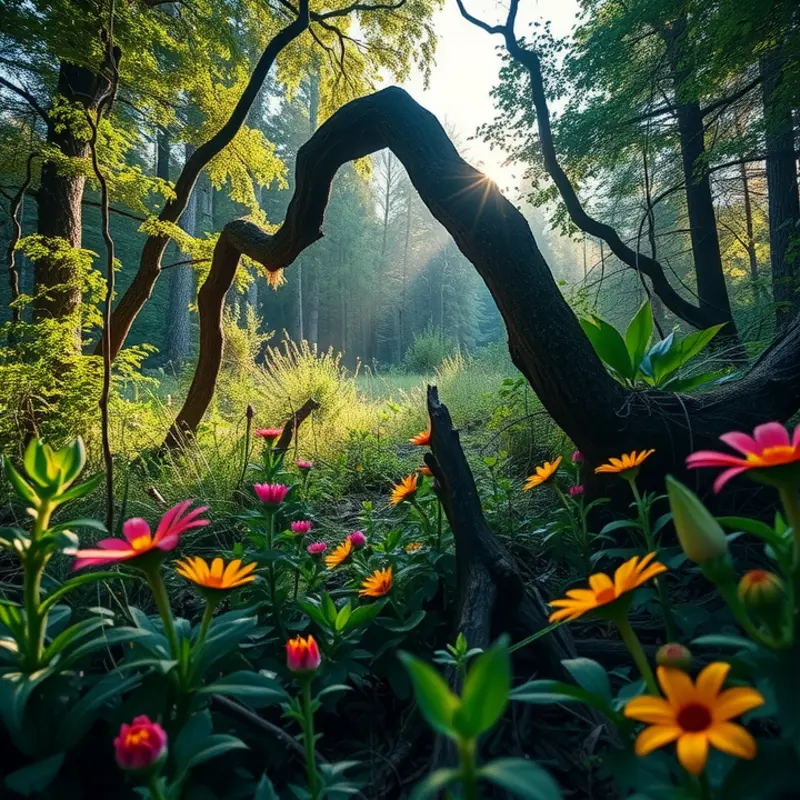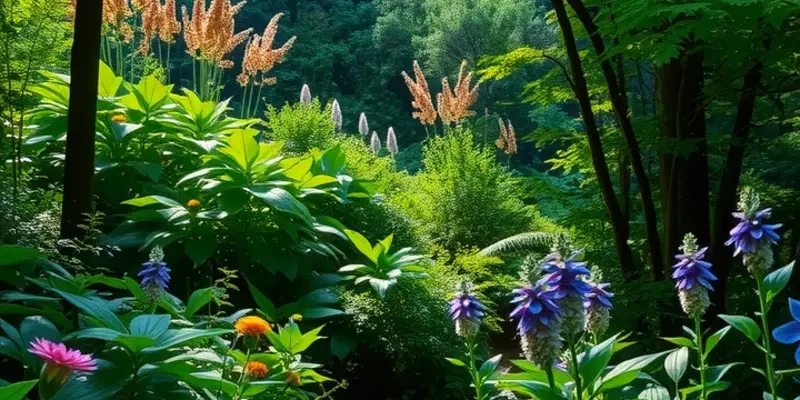Diving into the ancient practice of food foraging reveals a world where culinary traditions thrive in harmony with nature. Across different regions and cultures, the knowledge of edible plants, fungi, and natural resources is passed down through generations, allowing communities to connect with their environment and history. Whether it’s foraging for wild greens in the temperate forests or harvesting coastal seaweed, these practices underscore the intricate relationship between people and their surroundings—a relationship that many food enthusiasts and culturally-curious individuals can embrace and learn from.
Rooted in Tradition: Understanding Indigenous Foraging

The practice of foraging for wild foods is deeply entwined with the lives of Indigenous peoples across the globe. These communities have, for millennia, honed intricate knowledge of their environments, allowing them to identify, harvest, and utilize a diverse array of natural resources. This symbiotic relationship with the land is not only a testament to their survival but also to the celebration of cultural identity and culinary artistry.
Central to Indigenous foraging is the profound understanding of seasonal cycles and ecosystems. Many native traditions emphasize the importance of harvesting with the seasons, ensuring both the availability of resources and the sustainability of habitats. This is evident in the annual cycles observed by the First Nations of Canada, who forage for salmonberries and camas bulbs as the snow melts, or the San people of the Kalahari, who follow the rains to gather tsama melons and mongongo nuts.
Key ingredients like wild rice, harvested by the Anishinaabe people in the Great Lakes region, are not mere foodstuffs but pivotal to cultural rituals and community gatherings. The act of harvesting wild rice, known locally as manoomin, intertwines spiritual beliefs with environmental stewardship, ensuring the continued abundance of this critical resource.
For the Maori of New Zealand, the coastal and forest landscapes offer a plethora of resources such as puha (sow thistle) and karengo (seaweed). These ingredients, gathered from the wild, feature prominently in Maori cuisine, celebrated for their health benefits and their role in passing down traditional knowledge from one generation to the next.
Incorporating wild edibles into diets teaches us the importance of biodiversity and dietary balance. Indigenous knowledge systems often classify plants according to their nutritional and medicinal properties, integrating foods that are rich in vitamins, minerals, and other bioactive compounds. These practices can be seen as the original form of functional eating, offering a blueprint for modern dietary adaptations. For an in-depth look at ingredients supporting cartilage health, you can explore further here.
The wisdom of Indigenous foraging also reflects a deep respect for the earth. Practices like selective harvesting, leaving the root or bulb intact, ensure that plants regenerate. Many communities implement seasonal bans to prevent overharvesting, allowing ecosystems time to recover. Such practices highlight a long-term vision of sustainability that extends beyond mere resource consumption.
In preserving the land and its bounty, these enduring traditions offer valuable lessons in ecological mindfulness. Indigenous foraging underscores a philosophy where taking only what is needed is paramount. It connects people with nature in a way that fosters respect and responsibility, reminding us of our role as stewards of the environment.
Exploring foraged foods through the lens of Indigenous cultures not only enriches our culinary experiences but also grounds us in a deeper understanding of sustainable living. As we delve further into this culinary journey, let us carry forward the wisdom and respect for the natural world that Indigenous practices epitomize.
From Coastlines to Mountains: Global Foraging Practices

From the whispering salt-sprayed coasts to the rugged mountain ranges, the art of foraging stands as a testament to human adaptability. Each region across the globe brings forth its own tapestry of flavors, harvested from the wild by those with a keen eye for nature’s offerings.
Coastal Communities and Sea Vegetables
In areas where the ocean kisses the land, coastal communities have long relied on the vast marine pantry. Sea vegetables, like kelp and sea lettuce, are abundant. Rich in minerals, these plants are not just a food source but a cultural cornerstone. Dried and incorporated into local dishes, they add a savory, umami depth. In Japanese cuisine, dried kelp becomes kombu, a key ingredient in dashi broth, imparting a distinctive savory note that enriches a myriad of dishes. Meanwhile, in Northern Europe, coastal inhabitants gather blaasemsberry and sloke, adding bursts of color and nutrients to their meals.
Mountainside Foraging for Roots and Herbs
As one ascends to higher altitudes, the bounty transforms. Mountainous regions are home to hardy, resilient plants like wild roots and herbs. These ingredients have been used for millennia by indigenous communities. The Tibetan plateau yields high-altitude tubers and rhodiola, a root prized for its adaptogenic properties. In the Andes, potatoes were first domesticated, and even today, over 4,000 varieties exist, celebrated for their versatility and flavor.
Similarly, alpine communities in Europe foray into the woods to gather wild garlic and sorrel. These herbs lend a vibrant yet subtle garlic note, elevating everything from soups to breads. To understand the historical and cultural significance of such unique mountain ingredients, one might explore culinary influences of trade, where the movement of these flavors across continents is detailed.
Discovering Regional Flavors
The flavors derived from region-specific ingredients give a definitive identity to local cuisines. Norwegian spruce tips, gathered in spring, have long flavored local spirits and syrups. In Southeast Asia, pandan leaves are harvested fervently, infusing sweets with a nutty, almost vanilla-like aroma.
Each of these practices reflects a deep respect for the environment. Seasonal foraging encourages sustainable harvest methods. By keenly observing nature, foragers ensure that future generations continue to partake in this rich, nourishing heritage. These practices not only support ecological balance but also offer a profound connection to ancestral lands, guided by the rhythms of the earth.
Foraging teaches us to savor what might seem mundane at first glance—a small plant growing between stones or a spice hidden in plain sight. Enthusiasts and culinary experts alike seek out these rare flavors, inviting them into creative dishes that celebrate a world of natural abundance.
Final words
Embracing Indigenous food foraging knowledge not only enriches our culinary repertoire but also instills an appreciation for the natural world. By reconnecting with traditional practices, we can enjoy the taste of our environment while supporting sustainability and cultural heritage. Whether you choose to forage in your local area or seek wild ingredients in your culinary journeys, these practices invite a deeper connection to the food we consume. As you explore global culinary traditions, consider reaching for the wild flavors that nature offers, celebrating both the history and the future of food.








